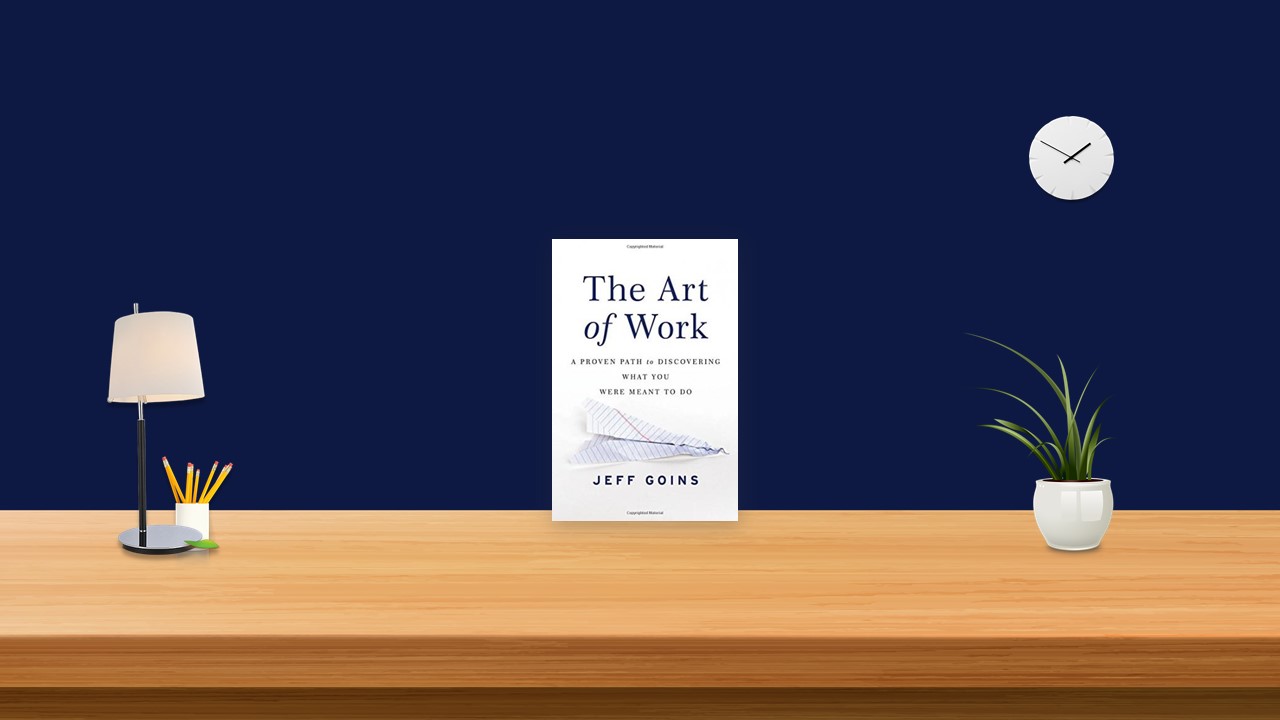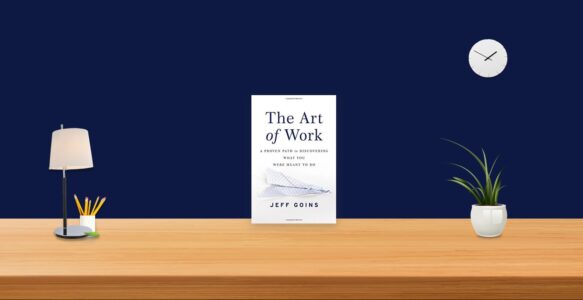Life Is A Classroom
Every place you go, every person you meet, every job you have is a chance to gain greater clarity in your self-education. Life is the classroom, and if you are paying attention, you can recognize the daily lessons available. Each day is a new page in a textbook you never complete, and as you sit in the student’s seat, you realize the apprenticeship has already begun.
The smart way to begin this process is by practicing with the tools available to you. Traditional mentors are hard to come by, but you already have access to wisdom and experience, teachers who will guide you in making decisions that will help you find your way. Who can you call on the phone and talk to right now? What friend or former coach would meet you for coffee this week if you asked? We all want to find someone who wants to invest in us, someone who cares, without realizing those people are already in our lives. The worst way to get a mentor is to go find one. The best way is to see the one that’s already there.
This was how Steve Jobs, the cofounder of Apple Computer, got his start. His own education was almost entirely informal, beginning with a short stint at Reed College, where the classes were so expensive he decided to drop out after six months. Sleeping on the floors of friends’ dorm rooms, he stayed on campus and continued to audit a few classes, including a calligraphy course, which he later credited for influencing the beautiful typography used in the first Mac.
Later, Jobs became friends with Steve Wozniak, who, before they founded Apple together, helped him get a job at Atari. “Woz” had redesigned an earlier version of the game Pong, which Jobs passed off as his own work to get hired as a technician.
While working at Atari, Jobs, who was hard to get along with, learned important lessons about design, software development, and creating technology for consumers. With every opportunity, he gained guidance, knowledge, and experience—each from a different source—all of which he was able to use later in life with Apple and Pixar.
Rarely do you find all the elements of an apprenticeship in one place. But if you look in the right places and are careful to pay attention, you will find them. Apprenticeship, then, isn’t a class you take or a mentor you meet—it’s a choice you make. And in that case, an accidental apprenticeship isn’t much of an accident at all; it’s the intentional process of choosing the opportunities you need to create your life’s work.
Unlike a formal education, this option is available to anyone. Instead of waiting for a teacher to come choose you or an academic institution to accept you, this apprenticeship is ready to begin when you are.
Not Knowing Is No Excuse
We all deal with this fear on some level. What fills us with anxiety, if we let it, is a simple phrase that keeps us from our purpose. It’s six simple words: “I don’t know what to do.” What should I write about? What kind of music should I play? What type of business do I open? Where do I begin? I don’t know. And with that seemingly innocuous response, a dream can die. But what we’re really saying in these moments of not knowing is that we want the journey to be safe. We want it drawn out for us—no surprises or setbacks, just a clear beginning and end. Unfortunately, that’s not the way the process usually works.
One way to think of it is in terms of maps and globes. Maps are easy. They’re flat and predictable, easy to chart out a course. You can see the whole landscape in a simple, two-dimensional layout. However, as easy as they are, maps are unrealistic. The world isn’t flat; it’s not color coded and foldable and easily stored in your car’s glove box. Life is too complex and beautiful to be captured on a map. It may help you see the big picture, but it does not help you understand the magnitude of the journey.
A globe, on the other hand, is complex. It spins on an axis. Some globes are even topographical, raised in certain areas where there are mountains or major bodies of water. They’re not the easiest tools in the world to use and certainly more difficult to store, but they’re just about the best picture we have of reality. Typically, you use a map to travel from one state or province to the next, usually a relatively short distance, whereas you use a globe to travel the world.
Which would you rather use, a map or a globe?
Say you live in Kansas. It’s not a bad place to live, but you long for the beach. You dream of the waves and sand and sunsets. But you never leave home because you’re not quite sure exactly where on the beach you want to go.
If you aren’t sure how to get started, get out of Kansas. That’s your first step. Begin to head toward water, and as you move, you’ll find the beach. Once you’re there, you can pick whatever spot you like. You don’t need a specific address to begin. The path to your dream is more about following a direction than arriving at a destination.
When you start pursuing your calling, you may find it to be more difficult than you thought it would be. And that’s okay. It means the journey is bigger than you expected. What you must do is keep moving. Don’t stand still. Don’t squander your time, holding out for someone else to give you permission to start. It won’t happen that way. No one is going to give you a map. You will have to step out into the unknown, listening for direction as you go. And when you are in doubt, just remember to drive toward water. You can always change directions once you get in the car.
The Pivot Life
In basketball, you are only allowed to take two steps once you stop dribbling the ball. When you take that last step, the foot you land on becomes what’s called a “pivot foot.” That foot must remain fixed, but the other foot can freely move about, allowing you to easily spin around and find a teammate to whom you can pass the ball. You can even pivot before dribbling the ball, allowing you to change direction before moving down the court. Although you are confined to where you are and how many steps you can take, at no point are you locked into any direction. That’s the beauty of the move. Even when all other opportunities are exhausted, you can always pivot.
Pivot is powerful because it takes away all of your excuses. It puts you back in control of the game you’re playing. Pivoting isn’t plan B; it’s part of the process. Unexpected things will happen; setbacks do occur. Whether or not you’re prepared to pivot will affect how well you weather those storms and find a way to survive.
We often look at successful people, hearing their stories of failure, and think that they succeeded despite the fact that they failed. But that’s not true. Successful people and organizations don’t succeed in spite of failure; they succeed because of it.
The Portfolio Life
People are not robots, programmed to do one thing. We are multifaceted creatures with many varied interests. And though we may like to believe we were born to do just one thing, or perhaps we’re comfortable with only having one career, the reality is most of us are hardwired for a handful of activities that when combined lead to our greatest satisfaction and best work.
A portfolio life is inevitable. The challenge, then, is not whether you should start building one, but when. We are complicated creatures, full of many interests and assorted passions. What do we do with all of them? We are not what we do for a living, but our life is made up of what we do. So how do we take this complexity into account? And what if our calling will never pay the bills? Do we give up the pursuit? Take a vow of poverty? Or is there another way?
The basic idea of a portfolio life is that instead of thinking of your work as a monolithic activity, what if you chose to see it as the complex group of interests, passions, and activities it is? And what if instead of identifying with a job description, you began to see the whole mass of things you do as one portfolio of activity?
The Work Is Never Done
Albert Einstein, on his deathbed, asked for his glasses so he could continue working on a project he believed would be his greatest work of all. He was not interested in mere phenomena anymore. He wanted, as he put it, “to know God’s thoughts. Everything else was details.
Yes, we all die unfinished symphonies, and the work is never complete. But if you hear the call to make your life about more than you and what you can contribute, you will have peace, not anxiety, when facing mortality. You will realize, as we all do, that you do not have enough resources to complete what you were called to do. Coming to the edge of the Promised Land, you will lack the strength to enter in. The project or company you spent your life trying to get off the ground will need even more management and even more funding to go to the next level. And your time will be finished, even though the work of a calling never ends.
At that point, you can either abandon the work, giving up in despair, or find a way to pass it on. You can do this by building a team, or creating an organization that multiplies your influence. You can plan a better future for your loved ones.
When we share our life’s work, when we accept that we are not done until we’re dead, we not only realize our own potential but we also help others do the same. Because in the end, success isn’t so much what you do with your life; it’s what you leave behind. Which may be what a calling is all about: leaving a legacy that matters.


